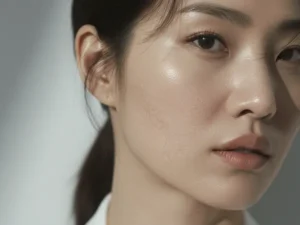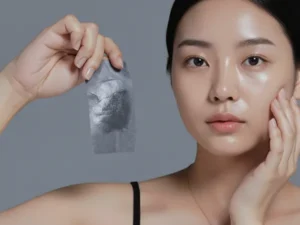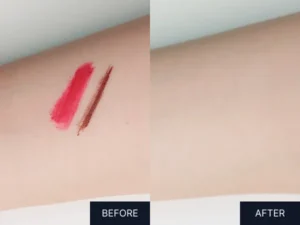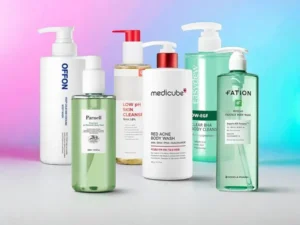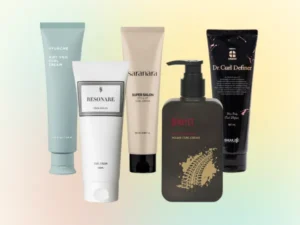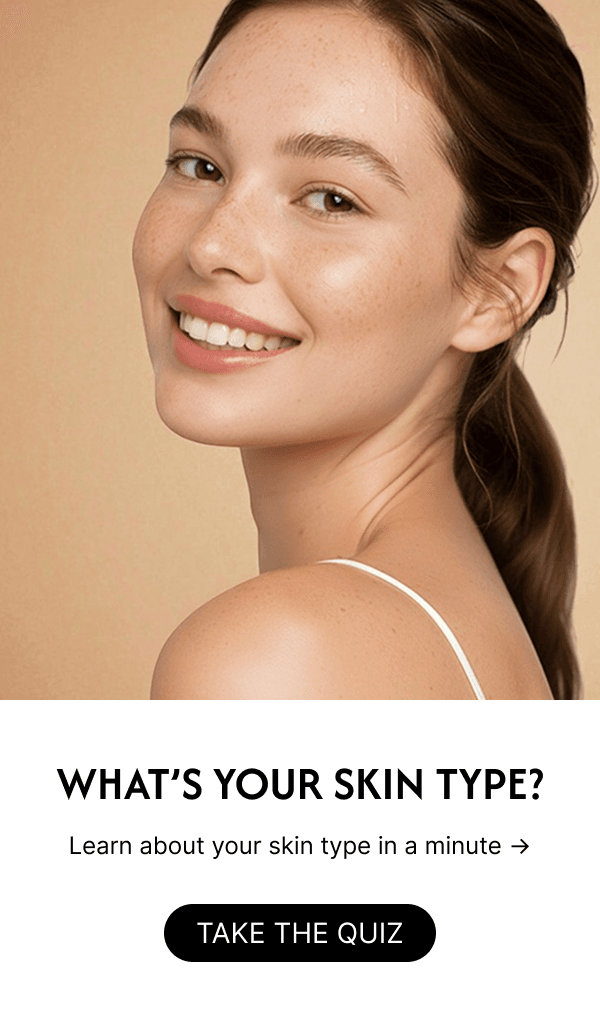If you’ve wondered how to get rid of blackheads, you’re not alone—blackhead removal is one of the most searched skincare concerns. With the right methods, you can clear pores, shrink their appearance, and prevent new ones from forming at home.
What You’ll Learn:
- What blackheads really are
- 5 proven removal methods—from gentle oil cleansing to professional tools
- A complete skincare routine that prevents new blackheads from forming
- When to see a dermatologist versus treating at home
- Common mistakes that make blackheads worse
Bottom line: The best way to eliminate blackheads is by preventing them through a targeted skincare routine at home.
1. What are Blackheads?
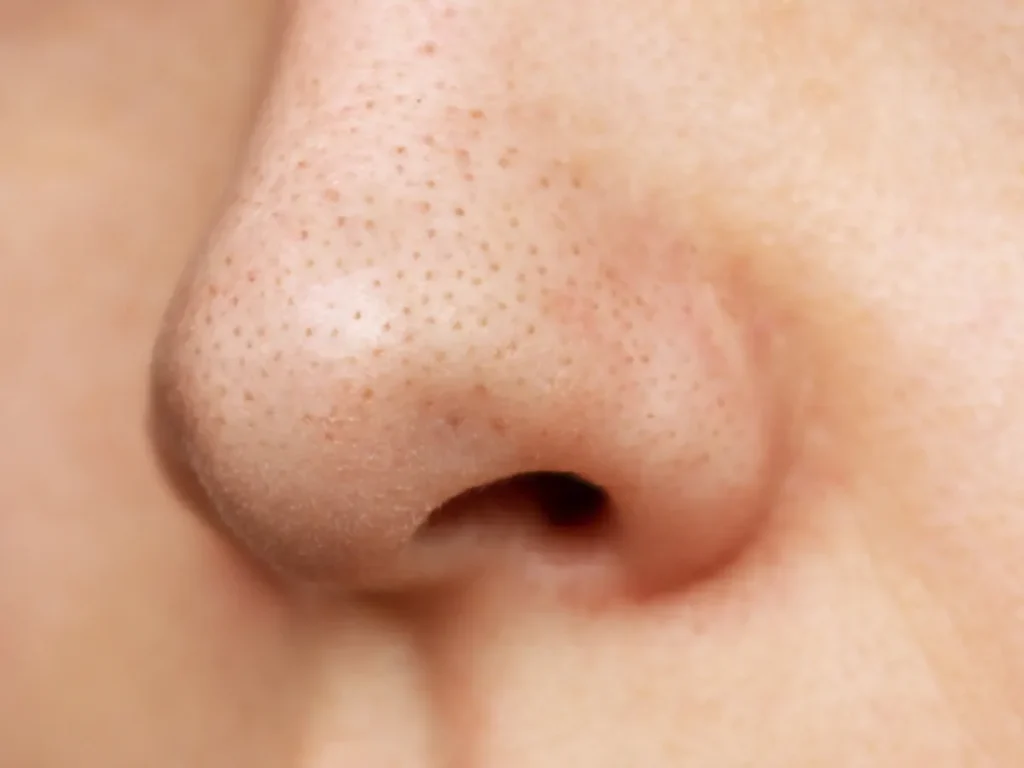
Blackheads are dark spots that form when pores become clogged with excess sebum and dead skin cells. Unlike pimples, blackheads have open surfaces, allowing the trapped material to oxidize when exposed to air—creating that visible dark color.
They are most common in areas with high oil production, such as the nose, forehead, and chin.
Around 20% of adults are affected by blackheads, and search trends suggest this concern may be even more widespread. The term “blackhead removal” is searched more than 150,000 times a month, with related queries including “how do you get rid of a blackhead” and “blackheads on nose,” driving the number even higher. This highlights just how common and frustrating this issue feels to people worldwide. In reality, the number of people dealing with blackhead concerns is likely much higher than the reported prevalence.
Why do blackheads form on the nose?
The nose has the highest concentration of sebaceous (oil-producing) glands on the face, producing significantly more sebum than other areas. Its raised structure also allows pores to open more easily, while the thicker, denser tissue provides more space for sebum accumulation. This combination causes trapped sebum to oxidize more readily, making nose blackheads appear darker and more prominent than elsewhere on the face.
Do blackheads go away naturally?
Blackheads rarely go away on their own. While shallow ones near the surface may sometimes emerge naturally, deeper, stubborn blackheads are the norm. The realistic goal isn’t instant removal, but rather preventing new formation and consistently managing existing ones to minimize their appearance.
What Exactly Causes Blackheads?
A blackhead forms when sebum—the oily substance that should normally flow out through your pores—gets trapped because the pore opening becomes narrowed or clogged. As this buildup stays inside and comes into contact with air, the exposed tip oxidizes and turns black.
Sebum is the natural oil your skin produces to keep it moisturized. When a pore is clogged, the trapped sebum mixes with dead skin cells and forms a small plug. Initially, this plug may appear white or yellowish and has a thick, sticky texture.
Over time, if the plug is exposed to air, the surface oxidizes and turns black, forming a blackhead. Contrary to popular belief, blackheads are not caused by dirt; they are the result of trapped sebum and cellular debris interacting with air.
2. How to Get Rid of Blackheads At Home
Many dermatologists recommend consistently managing blackheads at home using the right techniques. The most effective way to get rid of blackheads is to prevent them from forming in the first place through a consistent, well-structured skincare routine. This includes proper cleansing and following these five methods:
Method 1: Cleansing Oil
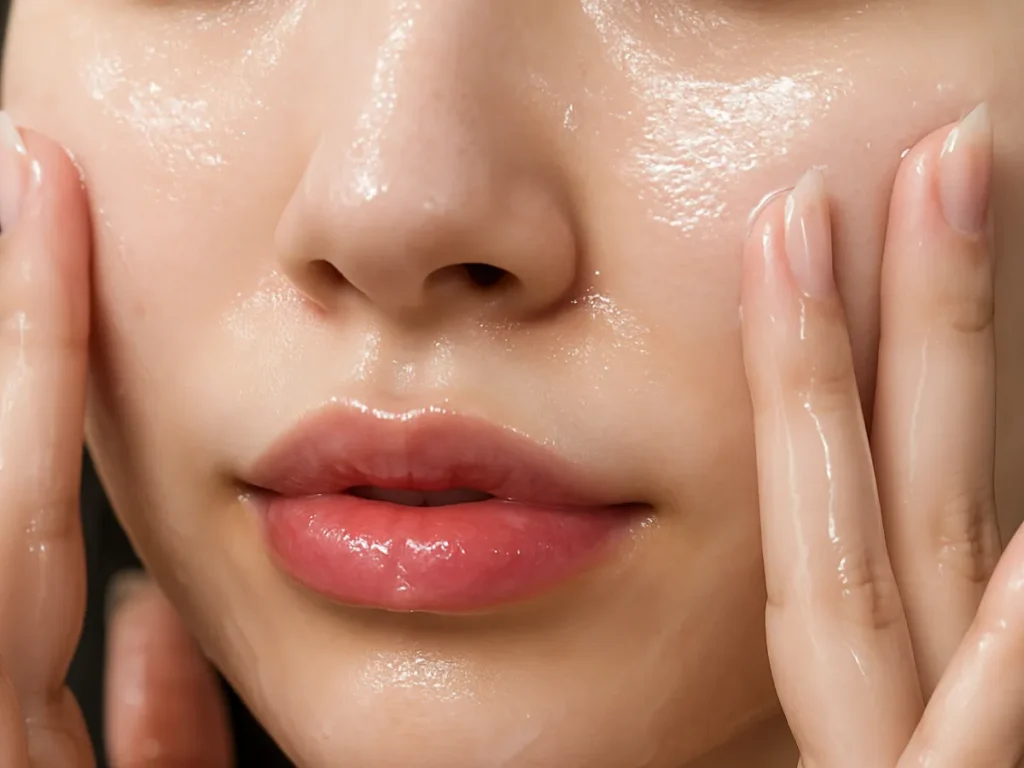
Blackheads and whiteheads are made of oil, so it makes sense to dissolve them using oil.
Dr. Shim Hyeon-Cheol, Head Dermatologist at The Cell Skin Clinic, once explained the concept using a memorable analogy. He compared the way oil cleansers work to how dry cleaning removes grease stains.
“Dry cleaning works by using oil-based solvents to attract and dissolve grease. In the same way, cleansing oils dissolve oil-based whiteheads and blackheads. When you use a cleansing oil, it acts like a magnet to pull out the oil trapped deep inside your pores.”
When you gently massage cleansing oil onto dry skin, it melts the hardened sebaceous plugs inside your pores, helping to loosen blackheads and whiteheads without damaging the skin.
How to Remove Blackheads with Cleansing Oil
- Dispense the oil onto dry hands and apply directly to a dry nose or T-zone area.
- Gently roll or massage for 30 seconds.
- Wet your fingertips with lukewarm water to emulsify the oil into a milky texture, then gently massage for another 30 seconds while avoiding friction.
- Rinse thoroughly with lukewarm water.
- Finish with a second cleanser (foam or gel) to ensure all residue is removed
Important Notes
- Inadequate rinsing may clog pores—double cleansing is essential.
- Over-cleansing can strip healthy oils—limit double cleansing to areas prone to blackheads (nose, chin, forehead).
Recommended frequency:2–3 times per week for effective blackhead management
Method 2: Sebum Softener
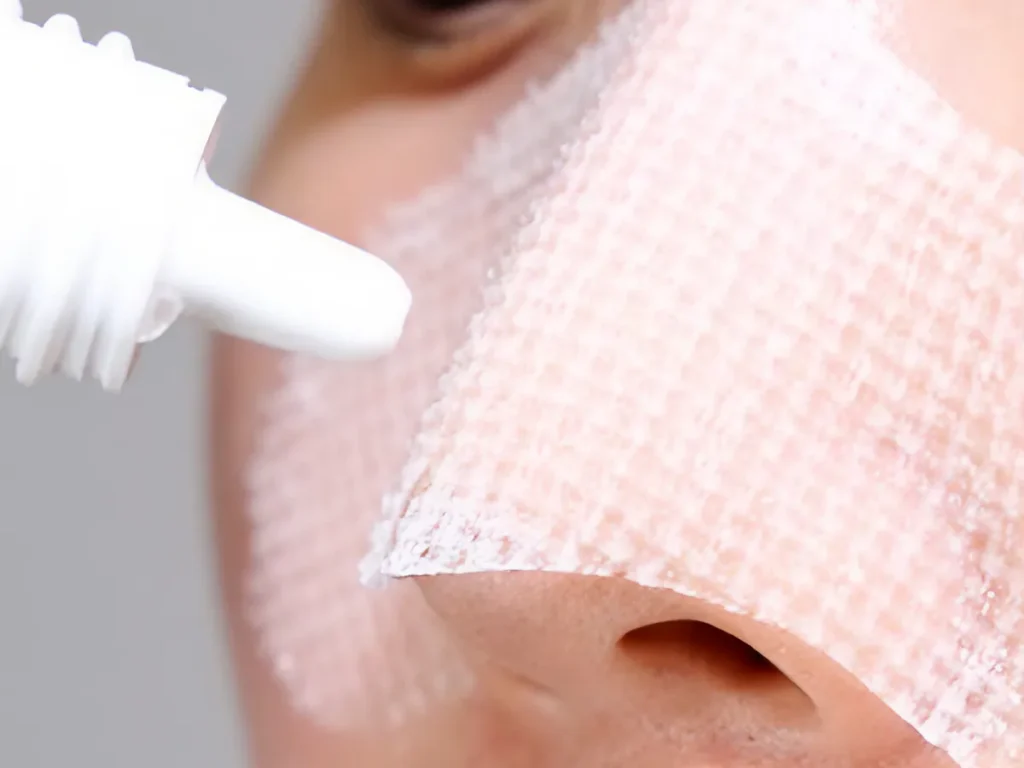
A sebum softener (also called a blackhead remover liquid) dissolves dead skin cells covering the sebum plug, making extraction easier. For people who struggle to rinse off cleansing oil completely, this option may be better.
How to Use a Sebum Softener to Get Rid of Blackheads
- After washing your face, soak a cotton pad or gauze with the product and apply it to problem areas.
- Leave it on for about 10 minutes.
- Remove the pad and gently wipe off softened sebum using a cotton swab or gentle scrubber.
- Rinse off any residue thoroughly with water.
For advanced care, you can apply the soaked pads, then cover with steam or a warm towel, and even add plastic wrap to enhance pore opening.
Important Notes
- Leaving the softener on too long may cause redness, irritation, or dryness.
- Overuse can strip natural lipids and leave residue that may block pores.
Recommended Frequency: Use 1-2 times per week, intermittently.
Method 3: AHA and BHA Products
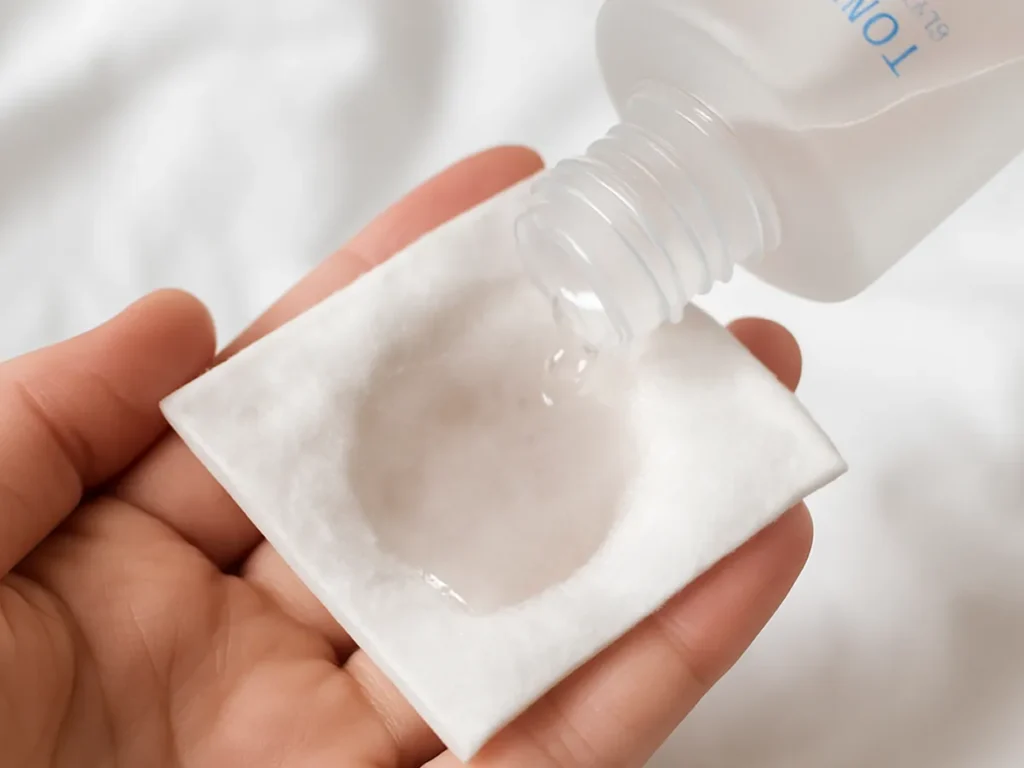
Using acids like AHA or BHA is another effective way to treat blackheads.
- AHA (Alpha Hydroxy Acid): Water-soluble, works on the skin surface, and removes dead skin cells. Good for dry to normal skin. Use products below 10% for home care.
- BHA (Beta Hydroxy Acid – Salicylic Acid): Oil-soluble, penetrates deeper into pores, dissolves sebum, and calms inflammation. Ideal for oily or acne-prone skin.
How to Use AHA and BHA for blackheads
- After cleansing, soak a cotton pad with AHA/BHA toner, place on nose for 10–15 minutes, then gently wipe.
- Always follow the product’s specific instructions if provided.
Important Notes
- These acids often work best when combined with other methods (oil cleansing, softeners).
- They can increase skin’s sensitivity to heat and sunlight—SPF is mandatory.
Recommended Frequency: High-concentration products should be used 1-2 times per week. Lower concentration products can be used daily.
Method 4: Ultrasonic Spatula
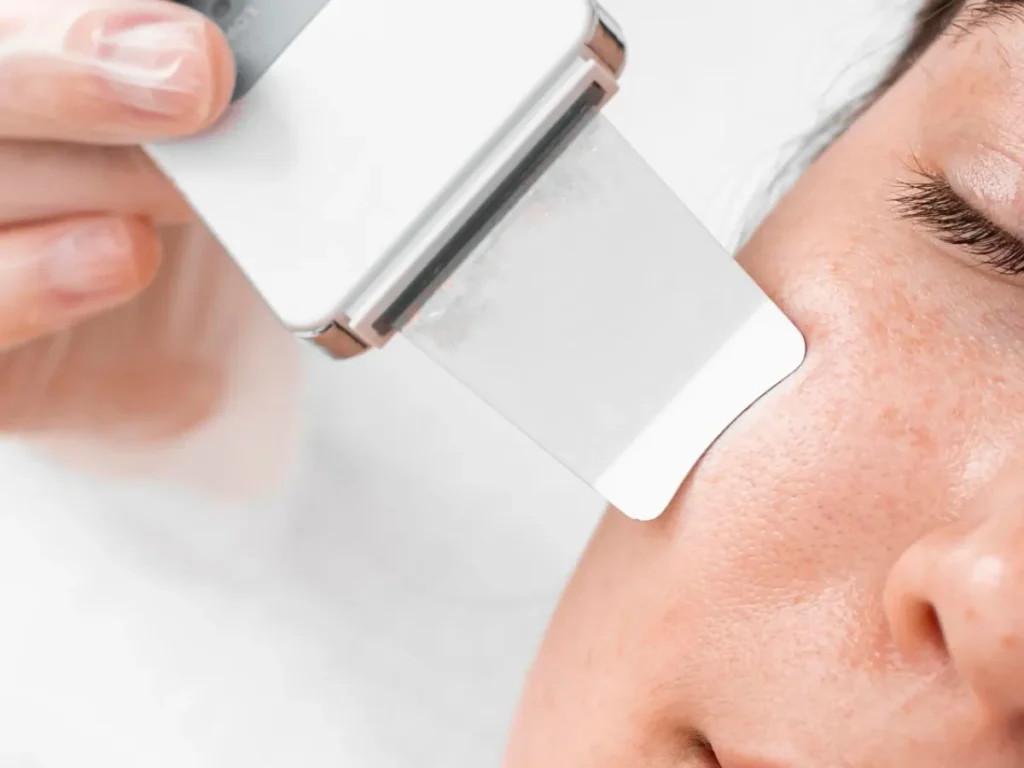
Ultrasonic spatulas, also called skin scrubber and water peeling devices , use high-frequency vibration to remove surface debris, dead skin cells, and some oxidized sebum from the skin.
They are commonly used in dermatology clinics and beauty salons, often together with sebum softening solutions or steaming. There are many home-use versions available as well for blackhead and exfoliation care.
How to Use an Ultrasonic Spatula for Blackhead Removal
- Start with a clean face, then hydrate the skin with steam or a warm towel to soften the top layer.
- Keep the skin moist using toner or water.
- Hold the device at about a 35–45° angle, and gently glide it along the skin in the direction of skin texture.
- Focus on areas prone to clogging (nose, chin).
Important Notes
- Overuse can make the skin sensitive or damage the barrier.
- Always follow the product’s instruction manual—the metal blade has a correct orientation.
- In clinics, this is often paired with sebum softeners, but at home, this combination needs caution.
Recommended frequency:1–2 times per week only.
Method 5: Extraction Tools & Pore Strips
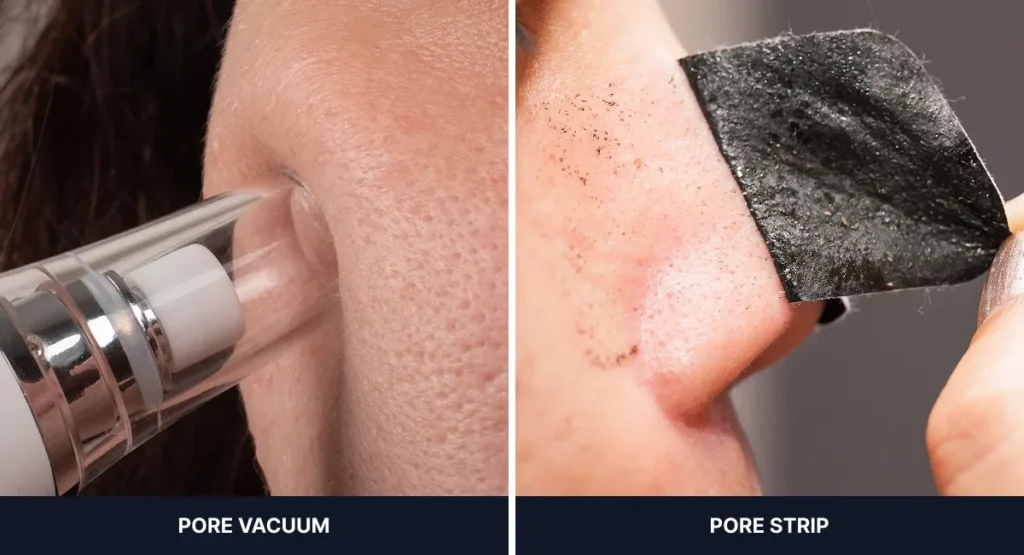
Physical removal methods include comedo extractors, pore vacuums, and pore strips.
Dermatologists generally strongly discourage physically removing blackheads at home. Using tools or strips can easily damage the skin, cause infection, inflammation, or even permanent scarring.
Despite the caution, some people enjoy the satisfaction of removing blackheads, and if you choose to do so, it’s important to follow the safest approach possible.
How to Extract Blackheads
- Only attempt when blackheads are visibly clogged and noticeable.
- Begin by cleansing, then apply a steam towel for ~5 minutes to open pores.
- Use a pore extractor, or place a pore strip on the area following the product instructions (usually ~10 minutes).
- Immediately follow with a soothing mask or calming product to reduce irritation and help the pores tighten.
Important Cautions
- Physical extraction can damage the skin barrier, rupture tiny capillaries, trigger inflammation, and increase infection risk.
- Post-care with hydrating and calming products is essential.
Frequency: Only when absolutely necessary, not regularly.
When To Visit the Dermatologist
If you’re unsure whether to visit a dermatologist for blackheads, consider professional help if:
- You already cleanse properly and follow at-home routines consistently.
- Despite your efforts, blackheads are still prominent and stubborn.
- You develop frequent redness or breakouts on the nose.
- Blackheads are causing emotional stress or affecting your confidence.
Persistent blackheads may indicate underlying skin conditions such as seborrheic dermatitis, enlarged pores, or excess sebum production. Dermatologists can provide professional treatments like chemical peels, extraction, or laser therapy to safely reduce blackheads and prevent complications.
While professional treatments may be costly, if blackheads remain persistent or stressful despite consistent home care, seeking expert advice is the safest and most effective way to manage them.
3. At-Home Skincare Routine to Remove Blackheads
Dr. Ahn In-sook, Director at the Korean Dermatology Research Institute, shared a simple yet effective at-home skincare routine on her YouTube channel to help manage blackheads.
We’ve expanded on her advice by incorporating recommendations from other dermatologists and skincare experts to create a more comprehensive routine for blackhead care.
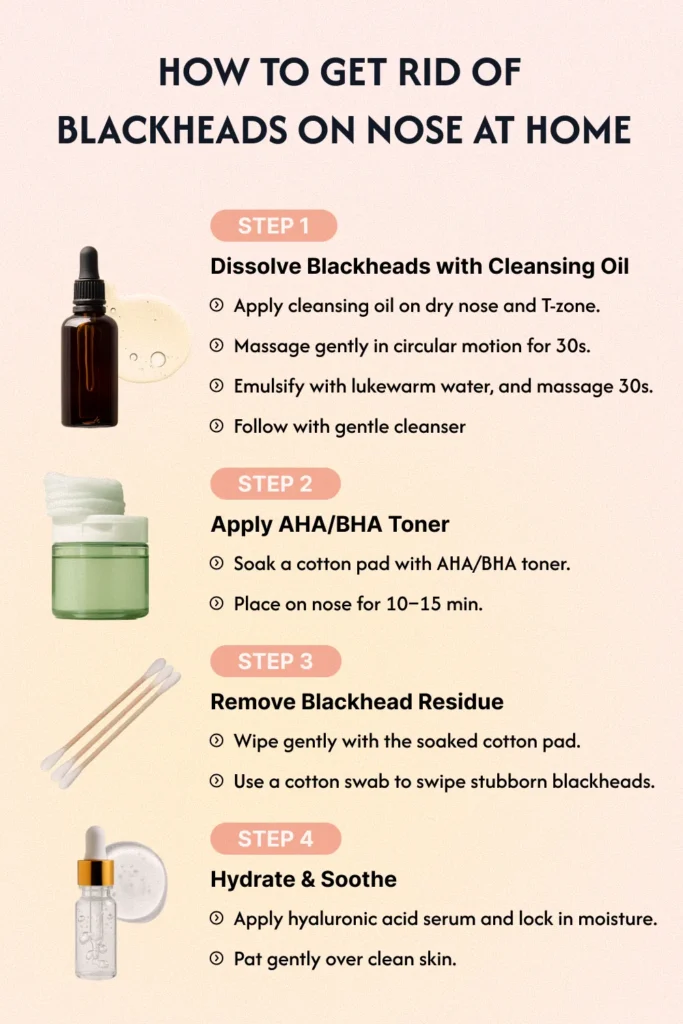
Step 1: Dissolve Blackheads with Cleansing Oil
- Apply cleansing oil to dry skin and gently roll for about 30 seconds.
- Wet your fingertips with lukewarm water to emulsify the oil into a milky texture, then softly roll over the nose and T-zone for another 30 seconds.
- Rinse thoroughly with lukewarm water.
- Follow with a light foam cleanse to remove any remaining oil.
Step 2: Apply AHA/BHA Treatment Like a Facial Mask
- After cleansing, soak a cotton pad with an AHA/BHA product or use a pre-soaked toner pad.
- Place the soaked pad on the nose like a nose patch.
- Leave on for 10–15 minutes to allow gentle exfoliation and pore-clearing.
Step 3: Remove Residue with Cotton Pads & Cotton Swabs
- Gently wipe the nose with the cotton pad used in Step 2.
- For any remaining stubborn blackheads, lightly remove them with a cotton swab.
Step 4: Lock-In Moisture After Blackhead Care
- After removing blackheads, dispense a few drops of hyaluronic acid essence or serum onto the skin.
- Gently pat the serum onto the nose, T-zone, and any areas that feel dry. Avoid rubbing aggressively.
4. Common Myths & Questions About Removing Blackheads
Should I Squeeze Blackheads Out?
Squeezing blackheads damages the skin and weakens its protective barrier, leading to long-term problems. Improper extraction can leave permanent scars, and using fingers introduces bacterial infections. Attempting removal with poor technique often results in costly dermatologist visits.
Things That Look Like Blackheads—But Aren’t

Not all tiny dark spots on your skin are blackheads. Three look-alikes are:
- Sebaceous Filaments:
- Normal, tiny collections of sebum and dead skin cells inside pores.
- Appear grayish or slightly yellowish, often on the nose, forehead, and chin.
- They are part of healthy skin and don’t indicate a clogged pore. Gentle exfoliation or BHA products can reduce their visibility temporarily.
- Trichostasis Spinulosa:
- A rare dermatologic condition where multiple fine hairs cluster inside a single pore.
- Appears as tiny dark “spines” resembling blackheads, commonly on the nose, cheeks, or upper back.
- Requires keratolytic agents, topical retinoids, or professional treatment to manage.
- Epidermoid Cyst
- A small, round bump under the skin filled with keratin. Often has a small opening on the surface that looks like a dark spot.
- A small epidermoid cyst may not form a noticeable bump and can be mistaken for a blackhead.
- Many “pimple popping” and “blackhead extraction” videos actually show cyst removals.
- Consult a dermatologist if something that looks like a blackhead changes in size or darkens.
Do Pore Strips Really Remove Blackheads?
Pore strips physically remove blackheads, but dermatologists don’t recommend them. Forceful extraction causes infection, inflammation, and scarring, while also weakening skin and potentially increasing oil production through barrier damage.
If you enjoy the temporary satisfaction, use pore strips sparingly and only for heavily clogged pores. They work best after opening pores with a steamtowel.
Never use blackhead strips on dry skin—this creates excessive harshness and significant irritation. Always follow with a soothing step to restore the skin barrier and minimize irritation.
Does Removing Blackheads Make Pores Bigger?
Removing blackheads does not permanently enlarge pores. Blackheads are simply clogged sebum, so extraction reveals the underlying pore, making it appear larger temporarily. Think of removing a nail from a wall: the hole becomes visible, but hasn’t actually expanded.
However, improper removal damages skin and can cause real pore enlargement. Aggressive techniques like harsh extraction or incorrect cleansing weaken the skin barrier, making pores lose elasticity over time.
Can Blackhead Pores Be Closed Permanently?
Pores cannot be permanently closed. Pore size is determined by genetics and skin structure. Professional treatments like laser or radiofrequency therapy can temporarily reduce the appearance and minimize blackhead formation, while retinoids support pore health at home with modest effects.
Consistent skincare and avoiding damaging habits remain the most effective approach for smaller-looking pores over time.
5. Takeaway: How to Get Rid of Blackheads At Home
Understand What They Are
Blackheads are oxidized sebum and dead skin cells, not dirt. They commonly appear on the nose, forehead, and chin due to high oil production in these areas.
Prevent New Formation
Consistency matters. Regular gentle cleansing, targeted at-home treatments, and proper skincare help minimize new blackheads.
Use the Right Blackhead Remover
- Cleansing Oils: Dissolve trapped sebum safely; always follow with a gentle foam cleanser to remove residue.
- Sebum Softeners & AHA/BHA Products: Exfoliate and loosen plugs without aggressive scraping.
- Ultrasonic Devices: Can help remove surface debris when used properly.
- Physical Extraction: Only for visibly stubborn blackheads and done with extreme caution; always follow with soothing care.
Follow a Simple 4-Step Routine
- Step 1: Oil cleanse to melt and loosen blackheads (30 seconds dry, 30 seconds with emulsified oil)
- Step 2: Apply AHA/BHA treatments on problem areas like a nose patch (10-15 minutes)
- Step 3: Gently remove any residue with cotton pads or swabs—no aggressive pressure
- Step 4: Apply a hyaluronic acid serum and hydrate your skin
Essential Dos and Don’ts of Removing Blackheads
✅ Best way to get remove blackheads
- Use cleansing oil to gently dissolve blackheads and sebum.
- Apply sebum softeners or blackhead-removing liquids to loosen plugs.
- Follow up with soothing products after any extraction or exfoliation.
- Identify whether dark spots are actually blackheads, sebaceous filaments, or other skin conditions.
- Seek professional help if blackheads persist, cause irritation, or affect your emotional well-being.
❌ Blackhead mistakes
- Squeeze or pick at blackheads with fingers.
- Rely on pore vacuums or strips regularly—or ever use them on dry skin.
- Scrub aggressively or use harsh tools on blackheads.
- Assume every black dot is a blackhead.
- Ignore persistent blackheads, inflammation, or scarring risks.
Bottom Line: Blackheads can’t disappear overnight, but with consistent care, gentle methods, and the right products for your skin type, you can significantly reduce their appearance while keeping your skin barrier healthy and protected.
